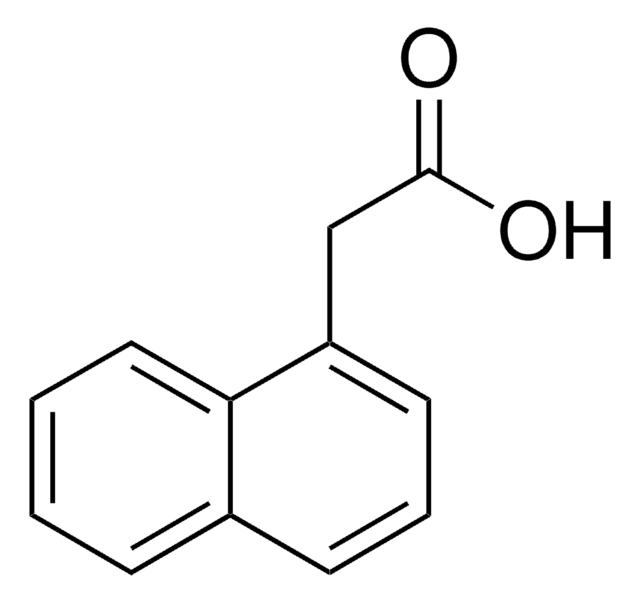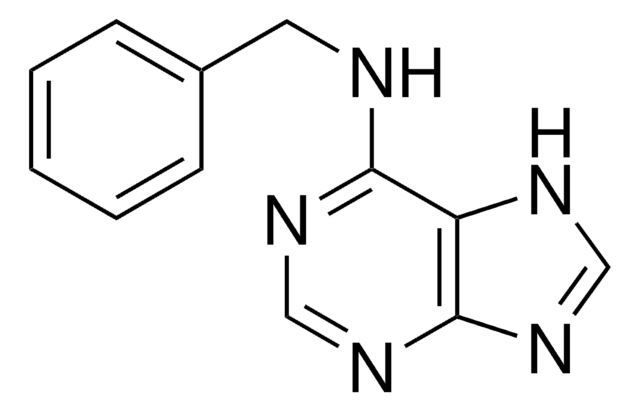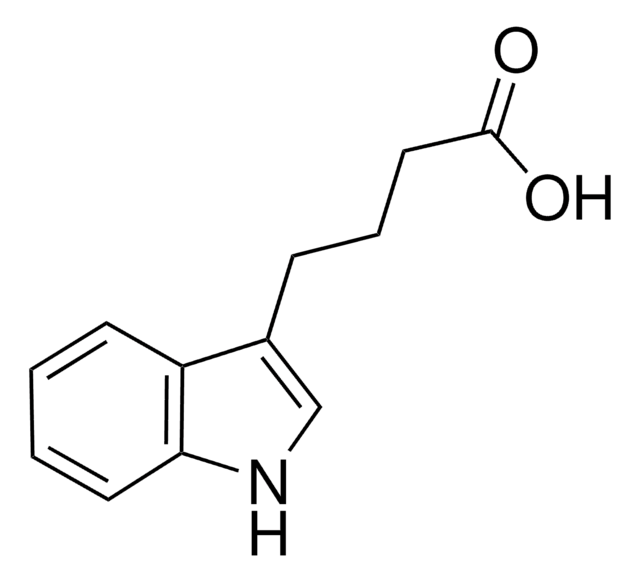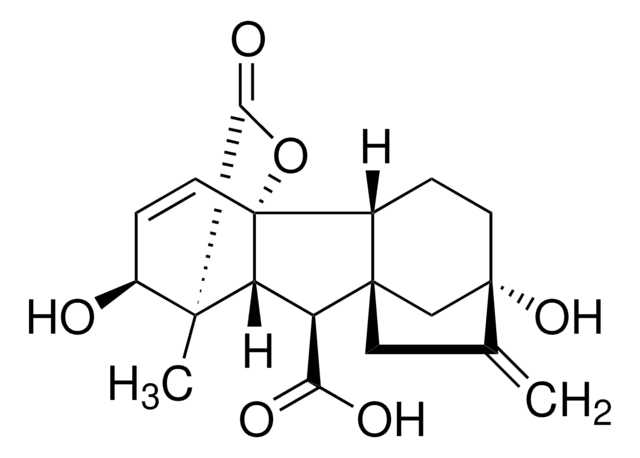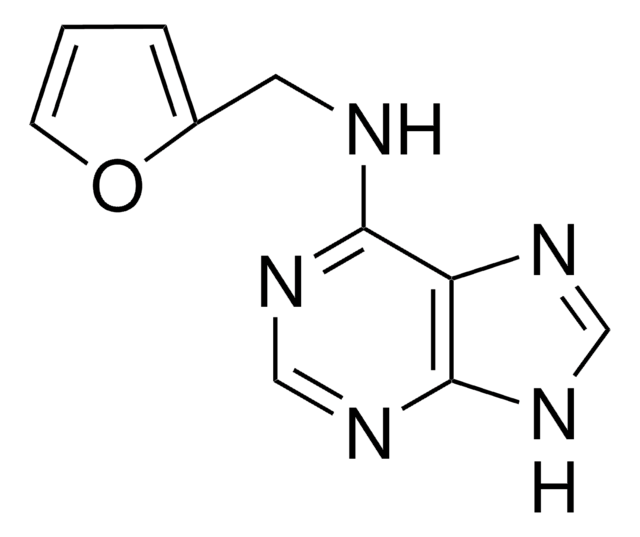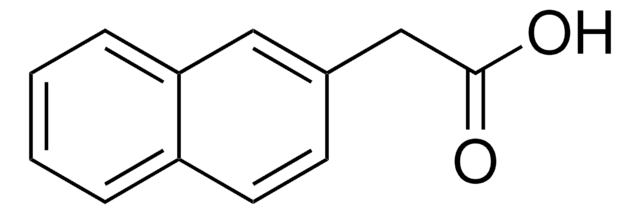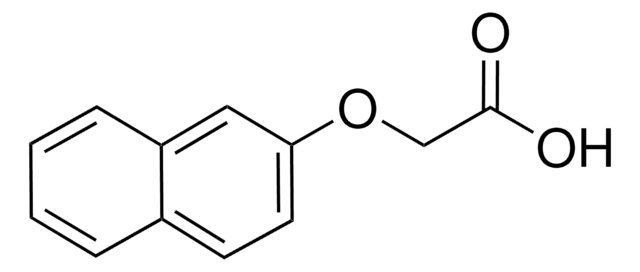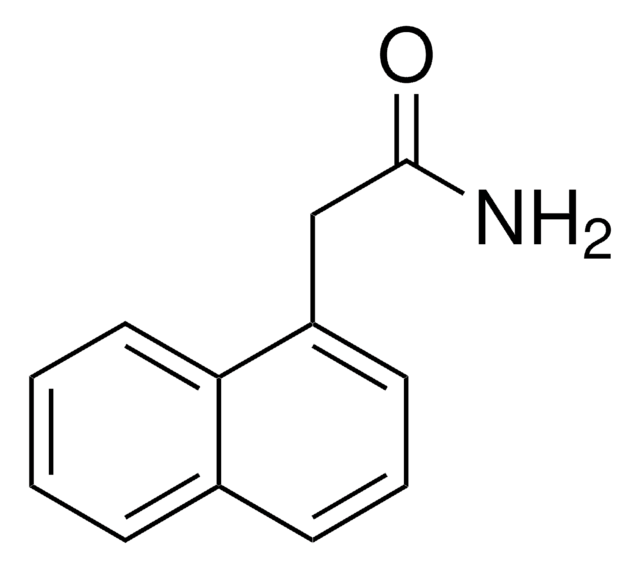N1641
1-Naphthylacetic acid
BioReagent, 1 mg/mL, suitable for plant cell culture
Synonym(s):
α-Naphthaleneacetic acid Free acid, 1-Naphthaleneacetic acid, NAA
Sign Into View Organizational & Contract Pricing
All Photos(1)
About This Item
Linear Formula:
C10H7CH2CO2H
CAS Number:
Molecular Weight:
186.21
Beilstein:
1308415
MDL number:
UNSPSC Code:
10171502
PubChem Substance ID:
NACRES:
NA.72
Recommended Products
sterility
sterile-filtered
Quality Level
product line
BioReagent
form
solution
concentration
1 mg/mL
technique(s)
cell culture | plant: suitable
mp
129-131.5 °C (lit.)
application(s)
agriculture
storage temp.
2-8°C
SMILES string
OC(=O)Cc1cccc2ccccc12
InChI
1S/C12H10O2/c13-12(14)8-10-6-3-5-9-4-1-2-7-11(9)10/h1-7H,8H2,(H,13,14)
InChI key
PRPINYUDVPFIRX-UHFFFAOYSA-N
Gene Information
human ... CCKAR(886) , CCKBR(887)
Application
1-Naphthaleneacetic acid (NAA) is a synthetic phytohormone auxin that is added to cell culture media such as Murashige & Skoog media and Chu′s N6 media.
Storage Class Code
12 - Non Combustible Liquids
WGK
WGK 1
Flash Point(F)
Not applicable
Flash Point(C)
Not applicable
Choose from one of the most recent versions:
Already Own This Product?
Find documentation for the products that you have recently purchased in the Document Library.
Customers Also Viewed
Wei-Qiang Chen et al.
Proteomics, 10(3), 369-379 (2009-12-24)
Although silk is used to produce textiles and serves as a valuable biomaterial in medicine, information on silk proteins of the cocoon is limited. Scanning electron microscopy was applied to morphologically characterise the sample and the solubility of cocoon in
J Cao et al.
Plant cell reports, 21(8), 789-796 (2003-06-06)
We have developed an efficient protocol for the in vitro propagation of transgenic broccoli plants using leaf explants as starting material. A high frequency of shoot formation from leaf explants was obtained on Murashige and Skoog medium containing benzyladenine (BA
Fatima Naim et al.
PloS one, 15(1), e0227994-e0227994 (2020-01-25)
Introducing a new trait into a crop through conventional breeding commonly takes decades, but recently developed genome sequence modification technology has the potential to accelerate this process. One of these new breeding technologies relies on an RNA-directed DNA nuclease (CRISPR/Cas9)
Kuaifei Xia et al.
PloS one, 7(1), e30039-e30039 (2012-01-19)
The microRNA miR393 has been shown to play a role in plant development and in the stress response by targeting mRNAs that code for the auxin receptors in Arabidopsis. In this study, we verified that two rice auxin receptor gene
Tobias Kretzschmar et al.
Nature, 483(7389), 341-344 (2012-03-09)
Strigolactones were originally identified as stimulators of the germination of root-parasitic weeds that pose a serious threat to resource-limited agriculture. They are mostly exuded from roots and function as signalling compounds in the initiation of arbuscular mycorrhizae, which are plant-fungus
Our team of scientists has experience in all areas of research including Life Science, Material Science, Chemical Synthesis, Chromatography, Analytical and many others.
Contact Technical Service